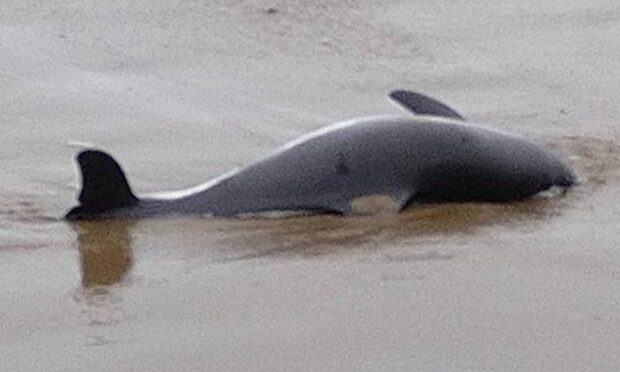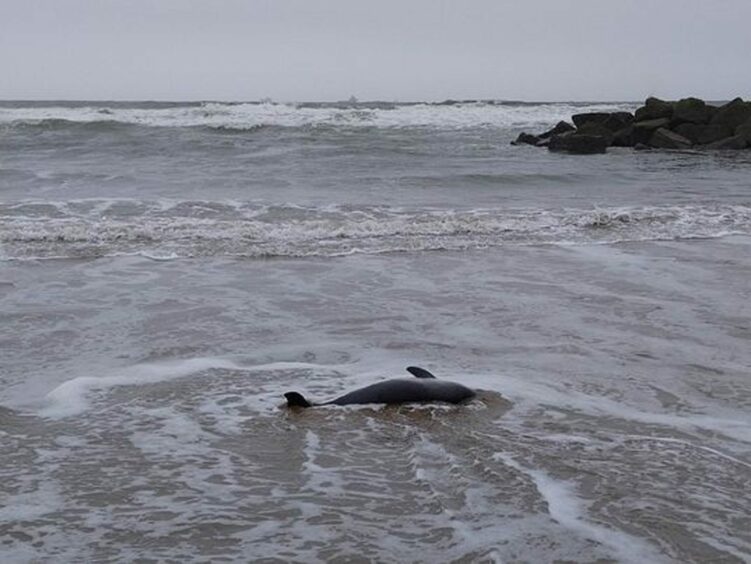Walkers on Aberdeen beach said they were sad to see a dead ‘baby’ dolphin washed up on the tide.
The dolphin appears to have been on the beach since early morning.
The dolphin is a bottlenose, of the kind typically seen from Torry Battery.
One man, Tony Mcmanamon shared his picture on Facebook page Aberdeen in Colour, saying simply “A sad ending for baby dolphin at Aberdeen beach”.
Mr Mcmanamon told the P&J the dolphin was just in front of the lifesaving hut, on Aberdeen beach front.
It is understood that its body has now been removed.
Dead bodies tell stories
The death of the dolphin has been reported to various organisations,
A spokeswoman for the Whale and Dolphin Trust said they can learn a lot from the death of sea mammals
She said: “Seeing a dead whale, dolphin, porpoise or even seal washed up on the beach can be very upsetting.
“These beautiful, powerful and charismatic animals bring so much joy and awe to people when they see them in our oceans, that the thought that they have ended up a mass of blubber and bone on our beaches seems a sad end.
“But the world of whales and dolphins is still a mystery to us. Although we can learn a lot from living creatures – through surveys and sightings, recording their location and behaviour – there is much we can learn about their lives when they wash ashore dead.”
She continued: “Although an unpleasant sight (and smell) when an individual washes up, there is a group of trained volunteers whose interest is piqued, providing an opportunity to dig a bit deeper into the background of the animal and learn so much more about its life and ultimately it’s death.”
She said if a carcass is fresh enough, and a more thorough investigation is required, the body will either be collected and sent to Scottish Marine Animal Stranding Scheme (SMASS), or the SMASS team will travel to the location of the stranded animal to perform a full necropsy (or post mortem).
This enables SMASS to gain insight into the life and death of the animal, uncovering details such as age structure, sex, body condition, cause of death, pollutant levels, reproductive patterns, diet, disease burden and pathology.


Conversation